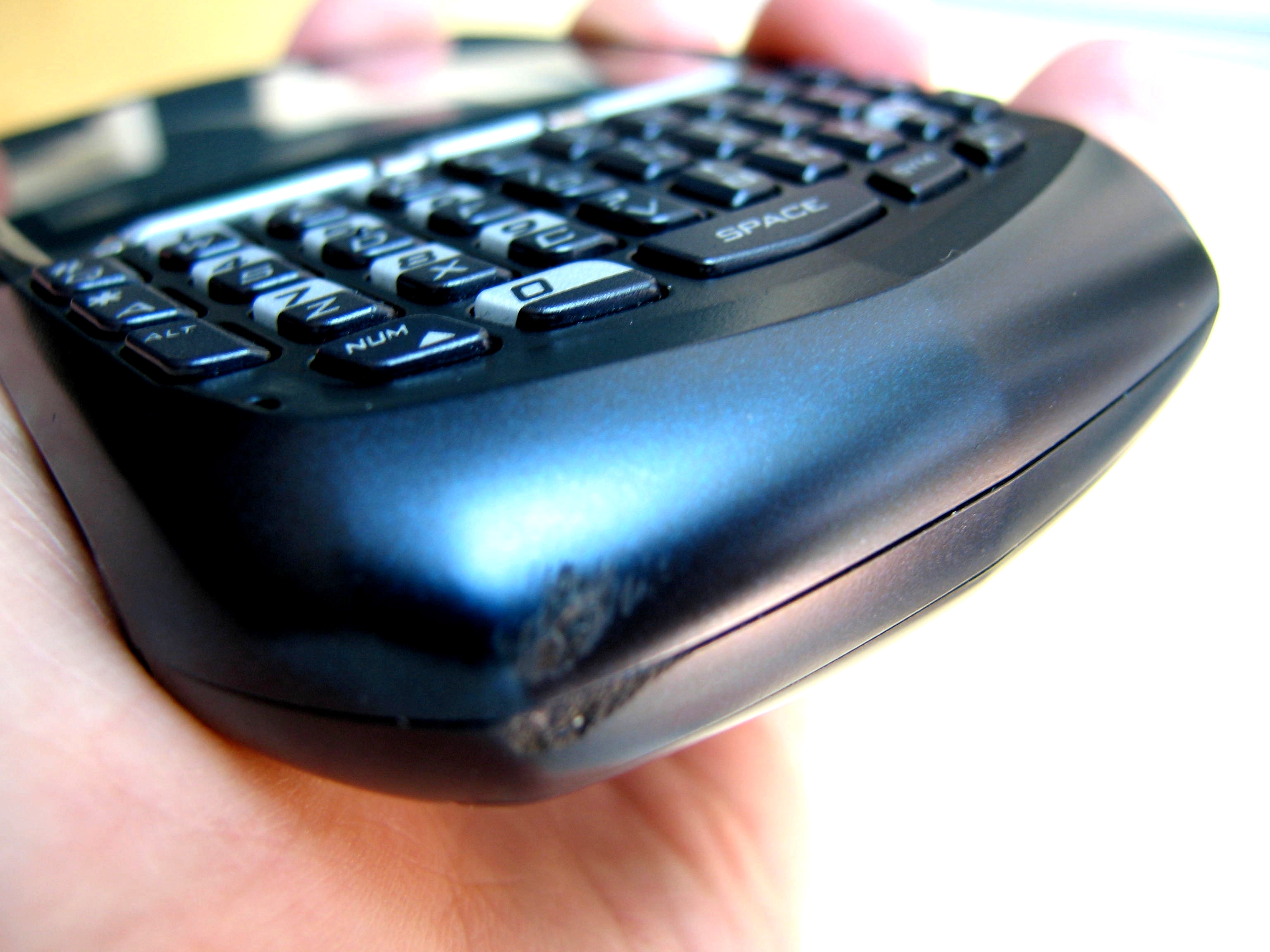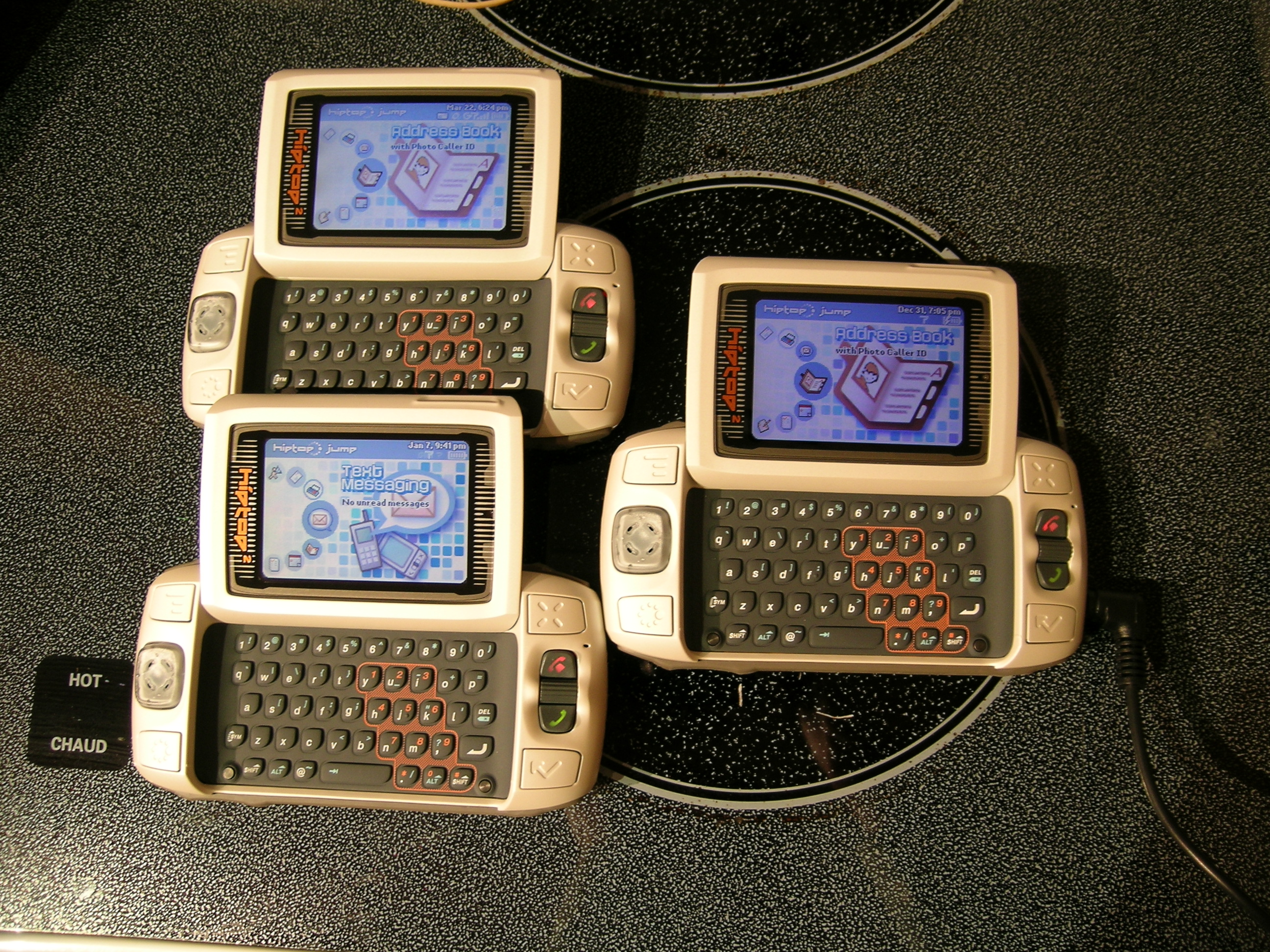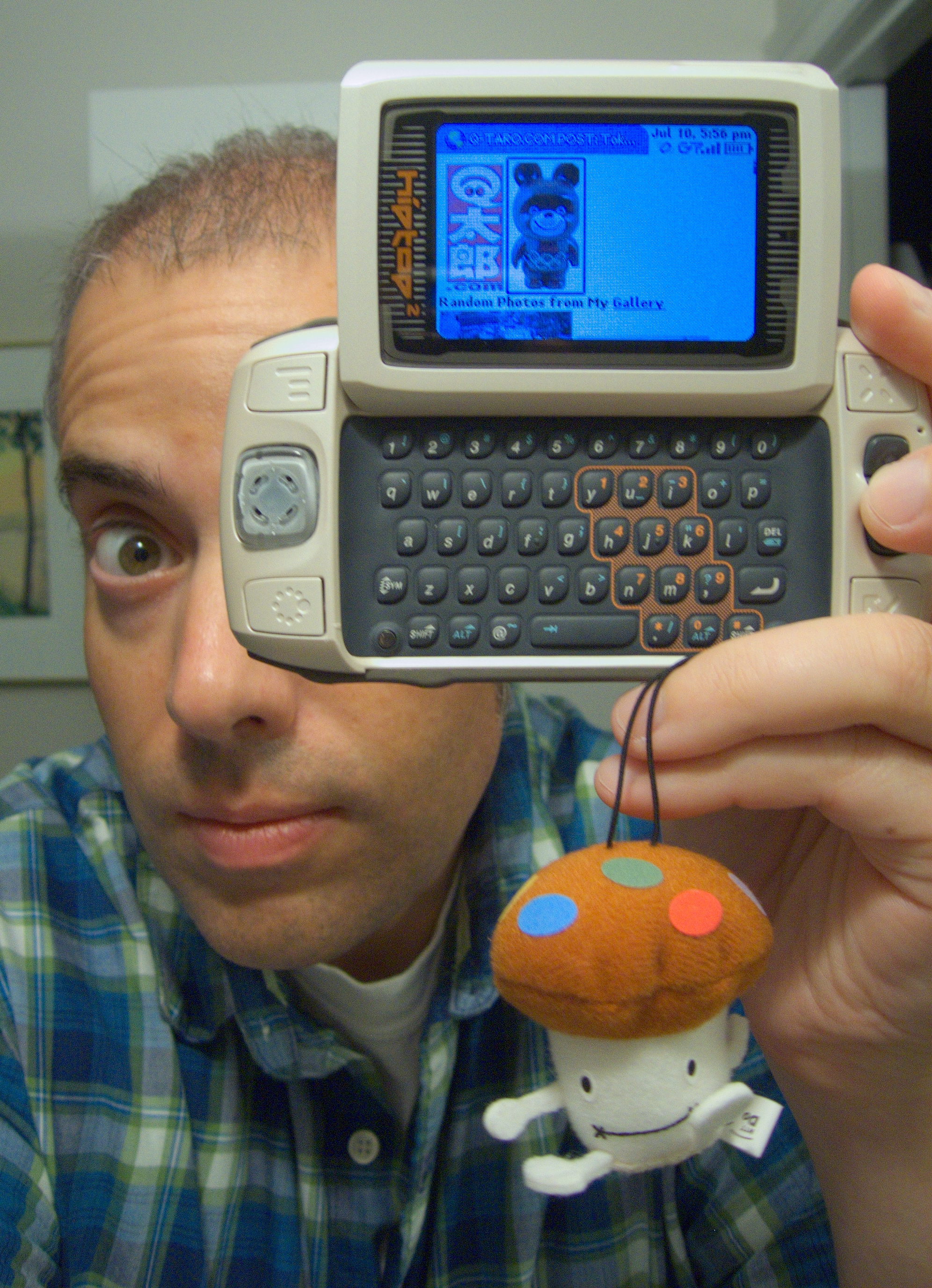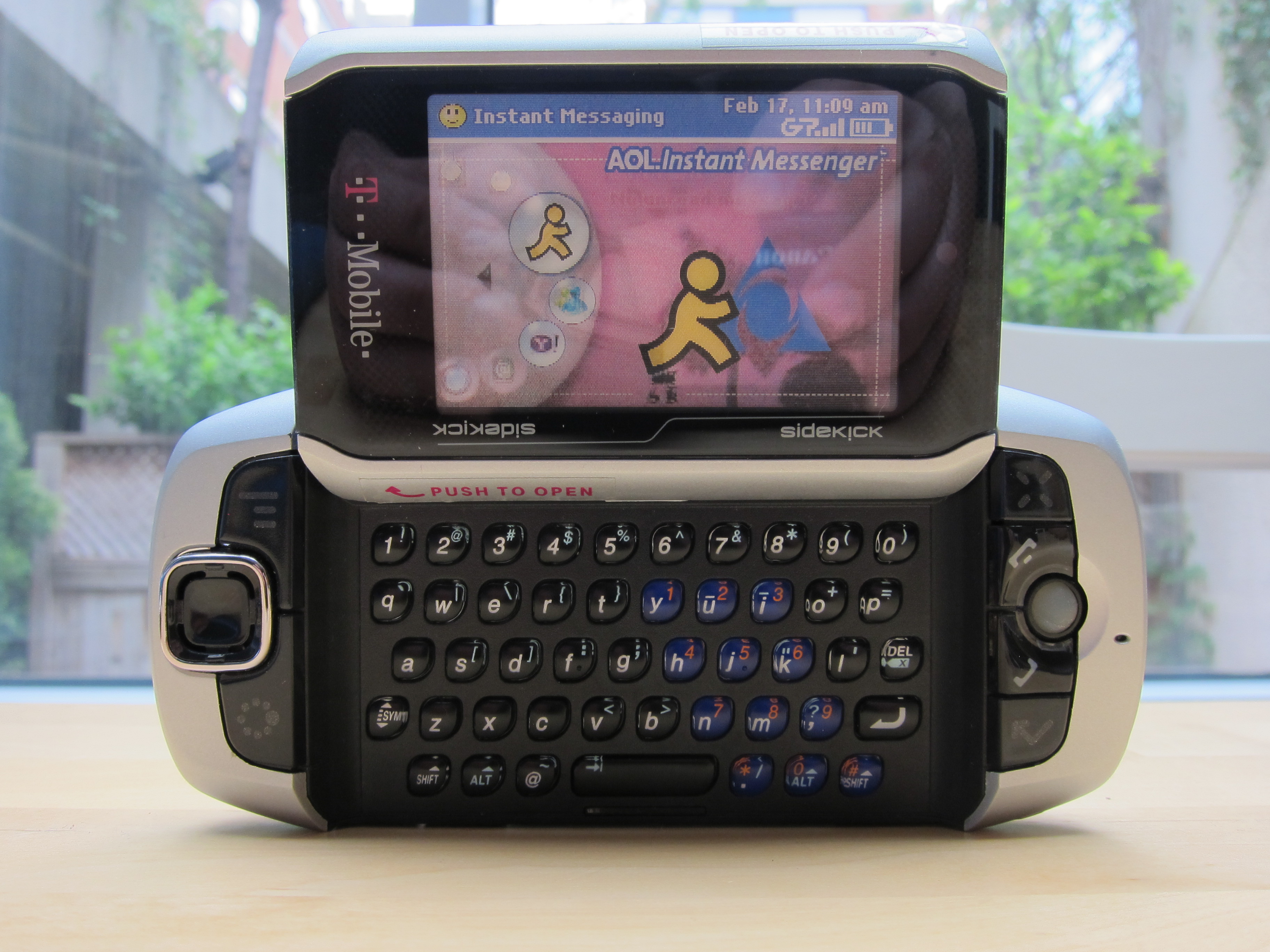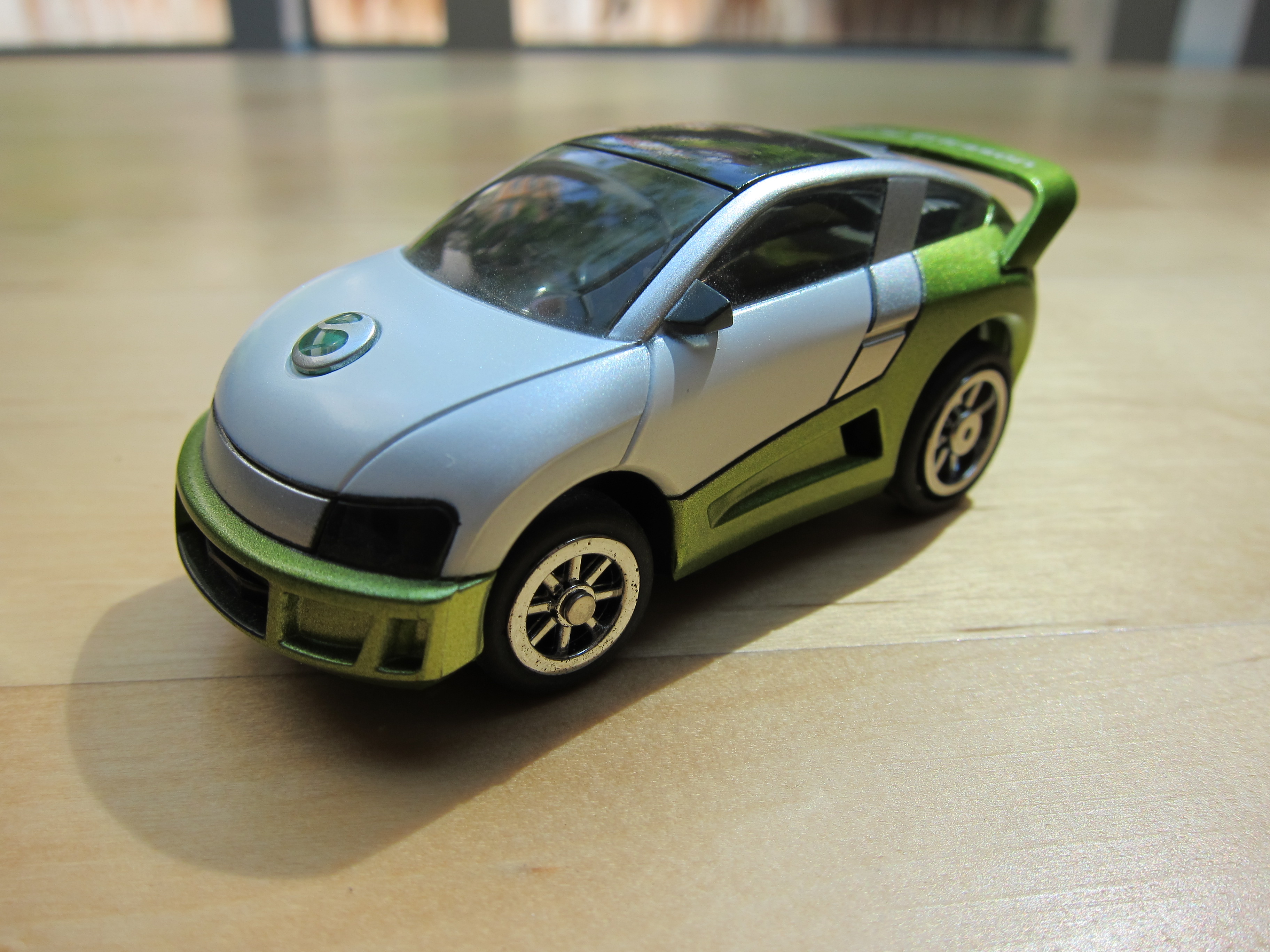No doubt about it, the iPhone was a revolutionary, game-changing device. Yet to this day I’ve never really been interested in owning one.
There were obvious, practical reasons. I could have imported a first-generation iPhone from the US (at a hefty surcharge), but as I remember it most of the “apps” in those early days weren’t much more than skins for iPhone-optimized web sites. By the time my carrier got the second-gen iPhone 3G I had already begun the move to Linux on my desktop computers. No iTunes meant no iPhone, simple as that.
There were political reasons as well. My short-lived affair with the HTC TyTN and a Windows laptop was no accident; after years of telling users how PowerPC was the superior chip for Macintosh computers, Apple suddenly and inexplicably switched to Intel. I was not impressed. I was similarly disappointed that Apple chose to sell the iPhone through carriers, with locks and subsidies, rather than unlocked in their own retail stores. Blogger Stefan Constantinescu wrote an excellent post in 2008 detailing how Apple had a chance to revolutionize the economics of mobile, and failed. Long story short: I felt burned by Apple and liberated by my unlocked Nokia, a device that I could use on any carrier, anywhere in the world.
Nokia trumped Apple in another, deviously clever way. In the spring of 2008 I received the first in a long series of trial devices from a blogger outreach program called WOM World. I think it started off as Nokia Blogger Relations, and its since been given the new moniker Nokia Connects. Whatever the name, the idea was genius. Anyone with some sort of online presence could request any Nokia product for a two-week trial. A review (good or bad) would send traffic to the writer’s blog and provide free marketing for Nokia. With a steady stream of shiny new toys arriving at my door the idea of being locked to an iPhone for a three-year contract seemed downright comical.
Oh yes, I forgot to mention… The standard carrier contract term in Canada is three years. We’re backwards that way.
Back to the iPhone, I’ve futzed around with almost every version of it, and after only a few minutes its always been the same story — I put it down and walk away. It just doesn’t do anything for me. I absolutely get that it’s made smartphones easier to use, especially for people who have never had one, but for someone like me who struggled through the early years of data synchronization, Internet connectivity and just about every other technological hurdle Apple’s “JesusPhone” has always seemed like a bit of a cheat.
Nokia fanboy? Mobile phone snob? Guilty as charged. I’d finally join the world of modern smartphones a few years later — but for the moment, enduring Symbian’s old school charm was about to pay off. Big time.
]]>Nokia smartphones of the day were powered by the Symbian operating system. The combination of the two was, for me, a culmination of every device I had owned prior. Like other Eseries devices the E61i was made for enterprise, with email support and a qwerty keypad worthy of a BlackBerry. But it also had a camera, and a not bad one at that. Like my Ericssons and Sony Ericssons the E61i supported Bluetooth and SyncML. Around this time I discovered a hosted SyncML service, so instead of shuttling my personal data back and forth to a single computer I could sync over the Internet and access it on the web, as I did with my hiptop — better, in fact, because now I could export my data at any time to standard file formats. Finally, like my TyTN the E61i had both 3G and WiFi radios — though 3G only worked in Europe and Asia. Did I mention that this device was never meant to be sold in the Americas, and was only available to Canada through an online retailer? The lack of Canada-tuned 3G turned out to be a blessing, as I was paying my carrier far too much money for not enough data. If $25/month for a paltry 3 MB seems ludicrous believe me, it was.
Because Symbian — also confusingly referred to as “S60” — was so popular in Europe, I was able to sample mobile apps for the first time. There wasn’t yet an on-device app store; you would instead visit the developer’s website and purchase the app directly from them — imagine that! The available third-party software was generally excellent. There were task managers, giving the user control over the running processes on their phone. There was the free Opera Mini web browser, critical to browsing web pages on my ridiculous data plan. There was even software that could emulate old game consoles, like Nintendo’s Gameboy Color and NES. To play my favourite childhood arcade games on my phone was, well… it was just awesome.
My E61i travelled with me far and wide. Its first test was a trip to New Zealand, where I was able to peruse the morning news over breakfast via the WiFi in my hotel. Next up was a journey to the Great Pyramids of Egypt, where I used GPS for the first time with a Bluetooth accessory. To save on roaming charges I was able to store map data directly on my phone before I left. Accessing GPS satellites was free, and as I later found out, quite illegal in Egypt when I was there. Nonetheless, I’ve a particularly fond memory of being on an overnight train to Luxor, my eyes glued to the E61i’s screen as the train pushed forth into parts unknown.
Perhaps the biggest testament to the E61i’s world-phone abilities was that it actually worked in Japan. It might not have been as svelte as the keitai there, nor could it access Japan’s i-mode services. But as a camera phone and Internet-connected device it could hold its own. You’ll remember that early on I wrote about wanting only two things from a smartphone. In 2000 my VisorPhone had granted me my first wish, an address book that could be synchronized from computer to mobile device. Now I had a handset that I could use anywhere on the planet. Checklist complete.
And then the iPhone came along and changed everything…
]]>
Here’s my S60-powered Nokia E61i, resplendent in its cheap and cheerful crystal case.
As you can see from this photo opp in front of a Fido van (for some long-since forgotten campaign) I was pretty happy with this Eseries device. In many ways it was a culmination of every smartphone I had owned prior. It was sturdy, like any other Nokia. It had a qwerty keypad worthy of a BlackBerry or hiptop. And like my TyTN it supported 3G and WiFi.
The 3G only worked in Europe and Asia, though — good thing, because Fido’s data service at the time was laughable. $10 CAD/month sounds entirely reasonable, but in 2007 it was good for a mere 12 MB of data. If that sounds bad, I was previously paying $25/month for 3 MB!
It works in Japan! Here’s a photo of the famous Shibuya Crossing, taken with the E61i’s 2 megapixel camera — not bad for a night shot with a 2007-vintage camera phone.
The E61i proved its mettle as a travel companion almost immediately on a trip to New Zealand. In addition to Tokyo it also accompanied me to such faraway places as Buenos Aires and Egypt. For the longest time I couldn’t figure out why my blog posts about the latter were getting so many hits — until I finally learned that the Bluetooth GPS accessory I had brought to Cairo with me was, in fact, illegal. Oops.
]]>Still stinging from the thousand bucks I dropped on my HTC TyTN I turned to eBay for a deal, and managed to find a local seller with an 8700g. It had branding from a carrier in the UK but the radio had been unlocked for use in Canada. I was unsure if the second lock on the device — the BlackBerry PIN — had been cleared, but all fears were allayed when I got the device, powered it up and successfully registered it for BlackBerry Internet Service (BIS).
In many ways, BlackBerries are win-win for carrier and user alike. Just like Danger’s hiptop, BlackBerry data passes through a central server before arriving on your handset. For carriers, this means less congestion on their networks; for users it means faster data — at least it did back in the dark days before the widespread availability of 3G. The BlackBerry operating system had a particularly helpful feature wherein the user could send “service books” to their device. If your email wasn’t working or some other ailment had besieged your handset a binary blob would be sent down the pipe to save the day. I’ve never seen this feature on any other mobile OS.
Though made almost entirely of plastic my CrackBerry was tough as nails; it shrugged off a brutal drop from about chest-high to an unforgiving sidewalk. Chalk this up to its roots as a text-only pager, I guess… And for text-related activities the BlackBerry did very well. Despite the fairly hideous on-screen fonts, dealing with email from multiple accounts was a breeze. Another BlackBerry innovation was the global inbox, a central dumping ground for incoming email, text messages, even missed calls. RIM has since removed SMS from the global inbox by default, which has been a challenge for my older siblings who still don’t entirely get what a text message is, let alone how to send one.
Sadly, any hopes of a CrackBerry addiction for yours truly were vanquished in short order by an absolutely reprehensible app called PocketMac, which RIM licensed as the official syncing software for Apple desktop computers. It routinely ate appointments, contacts and/or to-do items on every sync, and it was a constant game of cat and mouse to suss out what had gone missing. Thankfully OS X now has a proper Desktop Manager, but I’m a proper Linux user now. And to be brutally honest, I don’t think BlackBerry’s proxied Internet is of much use in a world where 3G data is cheap and plentiful. Well, plentiful anyway.
I did use a borrowed BlackBerry Curve many years later on vacation in Bermuda. It was the only way I could get an unlimited data package from the local carrier there. The BlackBerry experience in 2011 wasn’t enough to win me back, but the on-screen fonts were better, at least.
]]>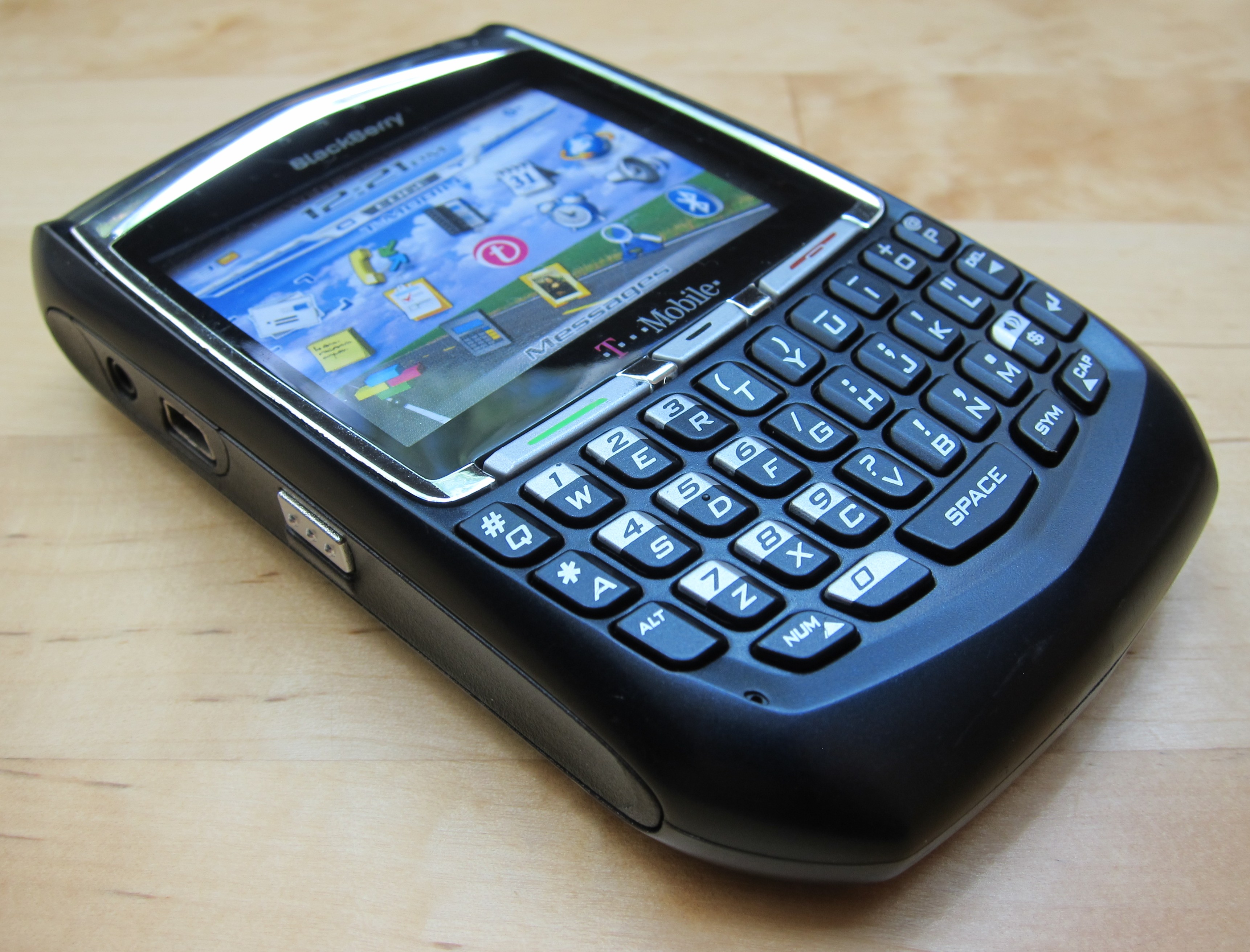
Just like this dummy model I got the non-souvenir, working version of the BlackBerry 8700g via an eBay auction. Mine was made for the UK carrier O2, but all versions of the “Electron” series shared identical specs — quad-band GSM, no camera, great keypad, scrollwheel on the side… The 8700 line had already been on sale for about a year when I started using it in April of 2007, so I was able to test my CrackBerry addiction for a song.
Email was great, the browser seemed okay and BlackBerry Maps was an unexpected treat. But for me the CrackBerry fell flat on its face with PocketMac, the then “official” syncing software for Apple desktop computers. It may be better now, but when I used it PocketMac would eat random appointments, contacts and/or tasks on every sync — far too high a price to pay even for free software.
My CrackBerry also, quite literally, fell on its chin from about waist-high to an unforgiving sidewalk. Some folks quite like having battle scars on their gear; not me, though — I’m vain that way.
If you’d like to read more about my BlackBerry experience I posted three separate entries about it on my personal blog.
]]>The original hiptop didn’t even have a camera; for tiny, blurry photos you had to buy a separate accessory that plugged into (of all things) the headset jack. But its innovative design provided ample room for a near-perfect qwerty keypad. They might well have called this phone the fliptop, as the keys were hidden beneath the screen until needed. To access them you’d simply flip the screen panel out — a combination of magnets and a sturdy hinge would make it pivot a full one hundred and eighty degrees, snapping into the open position with a satisfying click. It never failed to impress, myself included.
The second generation hiptop2 added a built-in 320×240 pixel camera with flash, still fixed-focus and well behind the times but better than nothing. Amazingly, the flip-out screen now sat flush with the rest of the phone when closed; this meant that the keypad was set in a bit deeper than before, but no matter — it was still a joy to use. And navigating the Danger OS was a breeze thanks to four humongous buttons surrounding the screen. Plus a scrollwheel. Plus a four-way directional pad that doubled as the earpiece, of all things!
As great as the hardware was, it wasn’t the hiptop’s stand-out feature. Like BlackBerry’s Internet Service, data on all hiptops was routed through a central server to optimize bandwidth and ease congestion on carriers’ networks. But unlike BlackBerry, Danger’s solution offered two significant advantages for the user. The first was unlimited data — that’s right, all you could eat for a mere twenty Canadian dollars per month. Web browsing, emails with attachments, instant messages… didn’t matter what it was, it was all included. So long as you weren’t roaming internationally you’d never have to pay anything more than the standard monthly fee. Of course, when you were travelling the hiptop was a terrible choice. Data was an all-or-nothing proposition, a hard lesson I learned after racking up over two hundred dollars in roaming charges when I turned my hiptop2 data on over breakfast one morning in the UK.
The persistent Internet connection provided another benefit for hiptop users: with every device came a free web portal where personal data and emails were stored. You didn’t have to worry about syncing data to any one desktop computer; so long as that computer had a web browser you could access everything on your hiptop from there. The portal also featured a webmail client, and since hiptops supported multiple push email accounts you’d need never worry about BlackBerry envy.
The price for all this convenience was learned later, when it was time to get my data off of the hiptop servers. Danger sold a plug-in for Microsoft’s Outlook called Intellisync, which gave me a local copy of my address book on a Windows computer. Photos could be downloaded individually from the hiptop web portal, but calendar entries, notes and to-do items had to be transcribed by hand if I wanted to keep them. And I did.
Danger’s proxied data service was similar in another way to BlackBerry’s BIS: It went down a lot. It happened often enough to be a familiar pain, rendering the device all but useless except for phone calls and SMS. I would always know when the data service came back up; my hiptop would vibrate with a loud grunt as everything on it was restored.
Still, my hiptops were fantastic devices, right up there with the best smartphones I’ve ever had. My hiptop2 was dependable enough to survive two weeks in Uganda in 2005. Though I had no data there I found a way to post short dispatches to my blog via SMS. Part of that trip was a three-day journey to and from the Bwindi Impenetrable National Park to see gorillas in their natural habitat. I can still remember spotting the first cell tower on the long drive back, and firing up my hiptop to let the world know that I was still alive.
That same hiptop was memorable for another, more dubious achievement. It holds the first and so far only breakup text I’ve ever received. Ouch.
]]>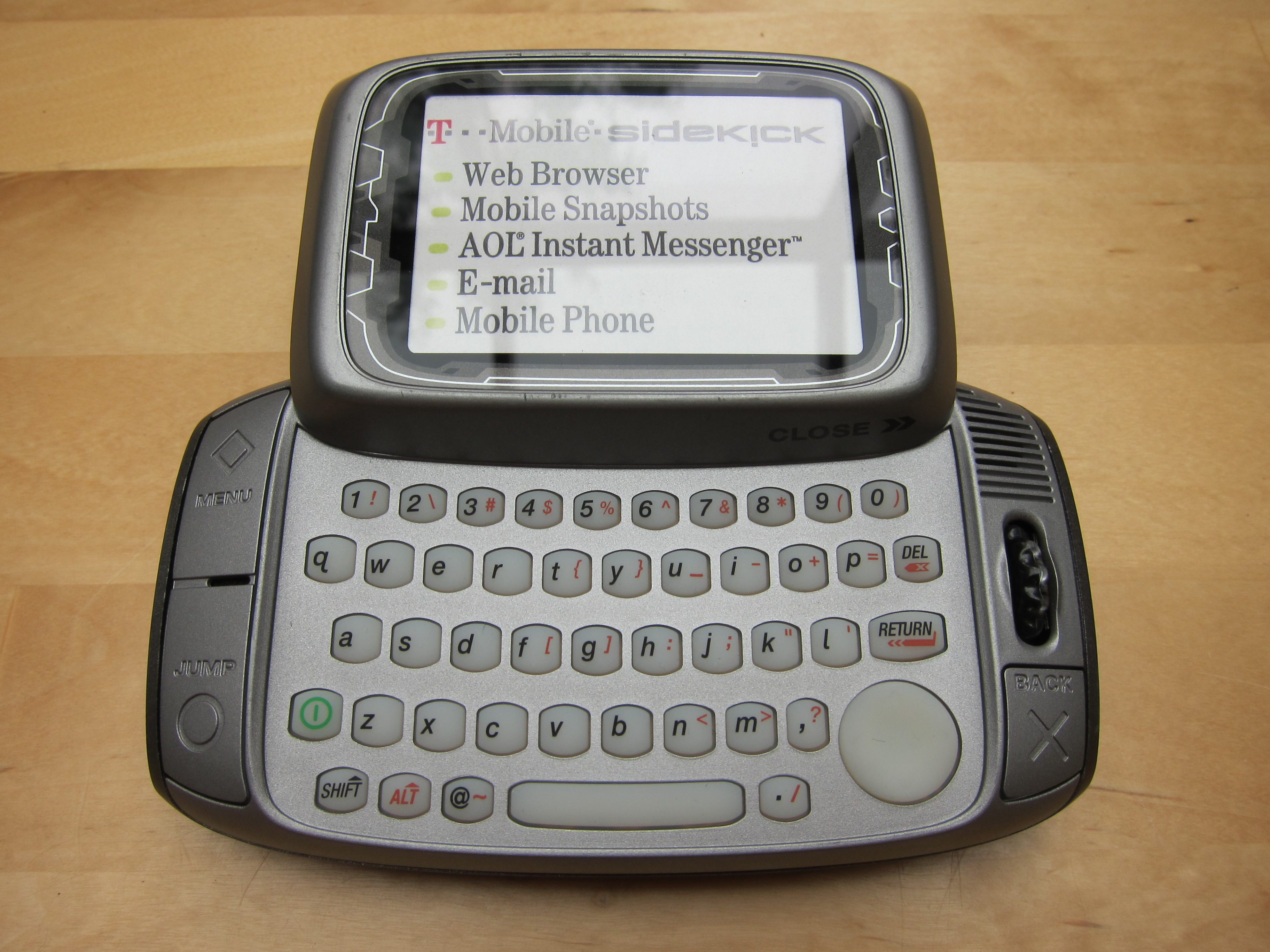
I no longer have my first-generation Danger hiptop, but I do have this T-Mobile dummy model — they call it the Sidekick down south.
Those fat and squishy rubber keys made it just about the best qwerty smartphone ever. The hiptop also had a persistent, proxied connection to the Internet; you can read more about that in the blog entry I posted when I first got one.
Hot stuff! Here are no less than three hiptop2s hanging out on my stove. If I remember correctly I had already upgraded to the second-gen model but wanted a backup device, and due to a screwup at Fido I somehow ended up with one more.
Thanks to its built-in loop I was able to adorn my hiptop with all manner of cell phone charms. This oversized Docomodake was really just for show — ordinarily I’d be sporting a much more tasteful ninja.
And here’s the hiptop that could have been. Fido was all set to start selling the hiptop3, but by then they had been fully assimilated into the evil Rogers empire and the order was cancelled. I can almost hear CEO Ted cackling from the boardroom: “Unlimited data? I don’t think so!”
Shortly thereafter I gave up my hiptop2 and moved on. You can read my requiem for it here.
]]>And yet I used this “dumbphone” (along with two other nearly identical models) for over a year, thanks largely to a technological standard called SyncML.
If you didn’t know, SyncML stands for Synchronization Markup Language. It allows one’s personal data — calendars, contacts, to-do items and more — to be synchronized between phone and desktop computer. Now here’s the important part: Unlike Palm’s proprietary HotSync, SyncML is an open standard, so anyone can make software for it. By this time Apple’s OS X desktop had SyncML support through an app called iSync; while my T616 wasn’t fully supported from the get-go, a third-party program called PhoneAgent did everything that iSync didn’t.
I didn’t even need a data cable; Bluetooth finally proved its worth as a means to wirelessly synchronize my data and install files to my handset. And thanks to Sony Ericsson’s sizable fanbase in Asia and Europe I was able to trick out my T616 with all manner of custom ringtones and themes.
All of the above actually applies to three separate handsets — the T616, T610 and Z600. The two “Ts” were virtually indistinguishable from the outside; on the inside, the T610 had a radio with an extra European band (900MHz) while the T616 swapped that out for an extra North American band (850MHz). This was more or less irrelevant, as both handsets worked on both continents, and Fido didn’t support the 850MHz band at the time.
The Z600 shared the same camera and internals, but was a bigger flip phone with customizable front and back panels.
It’s hard to say which one I liked more; the Z600 felt like a Japanese keitai but clearly needed a protective case, while the T610 and T616 were small enough to fit into the lighter pocket of my jeans. Of course I ended up dropping two out of the three, each in a different exotic locale. I managed to dent the metal case of my T616 by sending it crashing to the hard wooden floor of a swanky Bermuda hotel, and did about as much damage to the plastic housing of my Z600 as I fumbled with it in a public washroom atop Table Mountain in Cape Town, South Africa.
I also remember these handsets for their goofy accessories. I bought a Bluetooth-controlled toy car for my T610 that my cat chased for all of thirty seconds, then never again. For the Z600 I got a snap-on game controller, which was far too ridiculous-looking to ever use in public. I still have both of them tucked away in a drawer somewhere.
Any takers?
]]>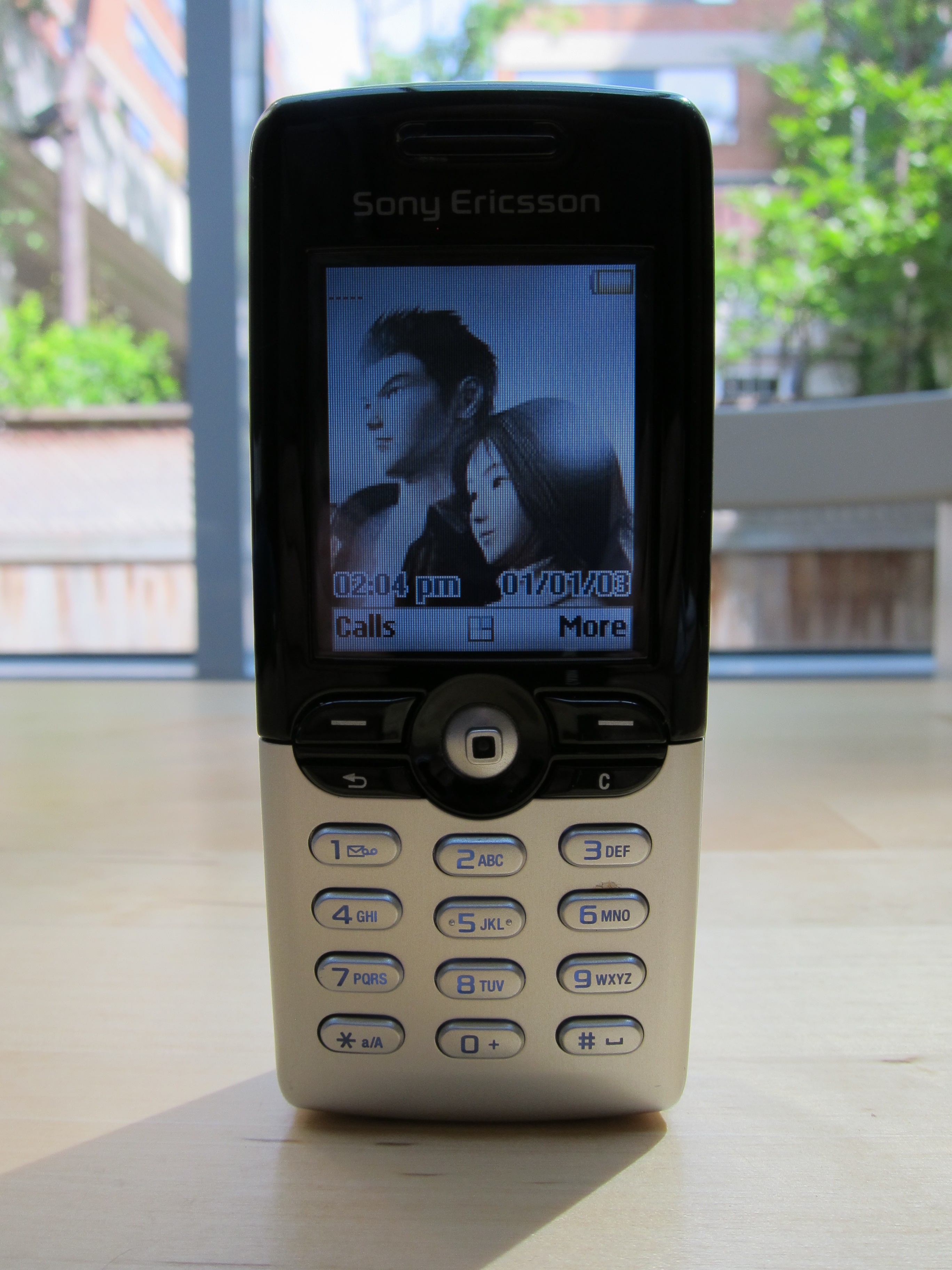
I believe the expression “Sony guts” would apply here. Though very different on the outside, Sony Ericsson’s T610 and T616 candy bar phones share the same specs with the Z600 flip. And really, the only thing separating the T610 and T616 is the 900Mhz compatible radio in the former, and 850MHz support for the latter.
I personally owned all three. I sold my T616 but never found another home for my T610, shown above. And who’s that dashing young man I’ve got in my wallpaper? Here’s a hint.
I didn’t just trick out my T610 with wallpapers, ringtones and games… I also bought this tricked-out Bluetooth-controlled car. You could drive it via the joystick on your phone, barely. And what really sucked was that the car would only take a charge from the phone, sucking up precious battery.
Back to the phone, you can read Steve Punter’s February, 2004 review of the Fido-branded T616 here.
The strip of photos above (via this Korean blog) pretty much shows you that the Z600 was all about the changeable covers. I’ve still got a couple in my drawer, along with that game controller.
You can see MobileBurn’s gallery of the controller (and car) here, and their review of the Z600 here.
If you were wondering how photos were from either camera, well… they were exactly like this.
]]>One of the biggest reasons why I didn’t keep it was the price tag: nine hundred and fifty Canadian dollars was a bit too dear. I think it was my Treo that instilled in me the optimal price point for one of these high-functioning handsets; even today, I’m loathe to pay more than five hundred bucks for one. And Fido offered no subsidies for the P800, as it was very much a niche device.
I might have given the P800 more consideration had it a proper qwerty keypad. Using the number pad for anything other than entering phone numbers was decidedly unpleasant. The touchscreen underneath had built-in handwriting recognition that didn’t work at all for me — I would have much preferred something more familiar, like Palm’s Graffiti alphabet. Instead, I had to make do poking at an on-screen keyboard with the included snap-on stylus. Not fun.
But the biggest problem with Sony Ericsson’s smartphone was that it had no available options for syncing data to my Macintosh computer. Remember that I’ve only ever wanted two things from my mobile phone, and above all else the ability to share a single address book. Apple to this day is still dwarfed by Microsoft Windows in terms of market share, and I wasn’t about to buy a new computer just for a phone (at least not yet). To manually write phone numbers to my SIM card would be an instant regression back to the stone age, and an immediate deal-breaker.
One thing the P800 had going for it was an integrated VGA camera. I decided that my next mobile would also be a camera phone. And sure enough, it was.
]]>

